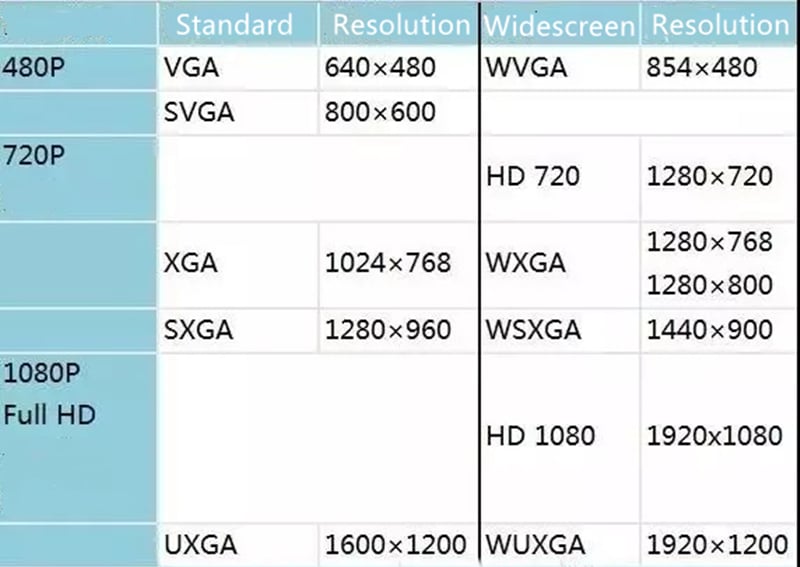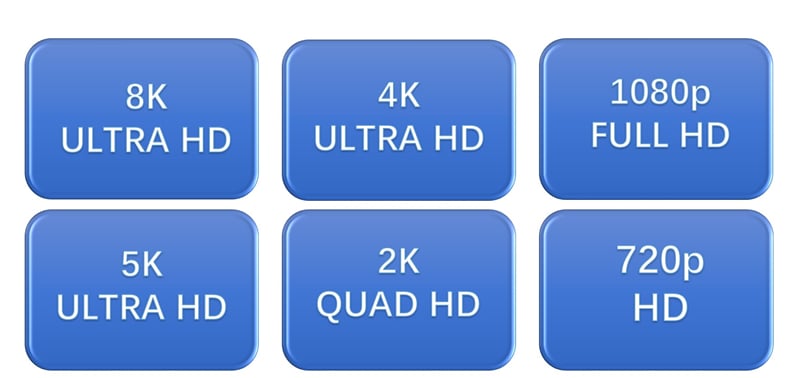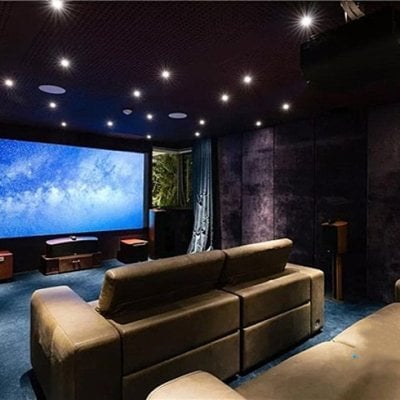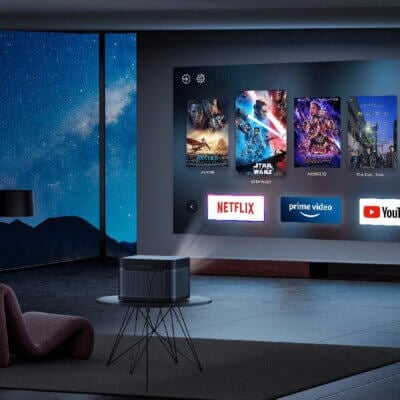Projectors are now widespread in various field, such as education, commerce and home entertainment, playing an important role in our daily life. More and more people are planning to buy a projector to meet their demands.

While we are trying to learn more about projectors, we frequently come into words like 1080p, 2K, 4K… I guess all of us are familiar with them, but I am afraid not everyone knows exactly what they mean. Keep on reading, because resolution is a critical factor you need to take into consideration when buying a projector.
What is Resolution?
The term resolution is often considered equivalent to pixel count in image, consider the screen or image as a chessboard, each square on the board is like a pixel. The tinier the square is, the more pixels this image contains, the crisper and sharper will be the image.

Take 1080p as an example, resolution is measured horizontally and vertically in pixels, like 1920×1080, means there are 1920 pixels in width and 1080 pixels in height, but we tend to use 1080p (“p” means progressive scan) to refer to resolution. Because with different image/screen width, the number of horizontal pixels varies.
The terms to describe resolution are:
VGA – Video Graphics Array
XGA – Extended Graphics Array
W – Wide
S – Super
U – Ultra

You may also be familiar with word like “HD”, “Full HD”. Well, HD means 720p, Full HD means 1080p, when you saw Quad HD, that means 2K, as to Ultra HD, it’s referred to as 4K, 5K and 8K.
Then, what is 2K, 4K and 8K?

When pixels in width are under 2000, we use the number of vertical pixels to depict resolution, like 480p, 720p (HD) and 1080p (Full HD). When the display has a horizontal resolution over 2000, we tend to use 2K (“K” stands for Kilo) to depict resolution. As for 4K, when the width and height of 2K (QUAD HD) doubled, we call it 4K (ULTRA HD), and when width and height of 4k doubled, we call it 8K (ULTRA HD). 4K contains around 8.3 million pixels and 8K contains pixels up to 33.2 million.

You would agree that 1080p is dominating the market, but 2K and 4K is emerging. In the near future, Ultra HD would become an industry standard.
More to know about resolution when buying projectors
Catering to the market, manufacturers love to highlight their projectors with 1080p, but attention, when it comes to projectors, the term resolution becomes a bit more complicated.

Native resolution & supported resolution
You may notice that there are native resolution and supported resolution, as a reminder, they are not the same thing. A projector with native resolution 1080p means it can provide a 1080p image output technically. However, a projector with supported resolution 1080p only means it’s capable of decoding 1080p video and compress it to lower resolution. The final image output won’t be 1080p.




